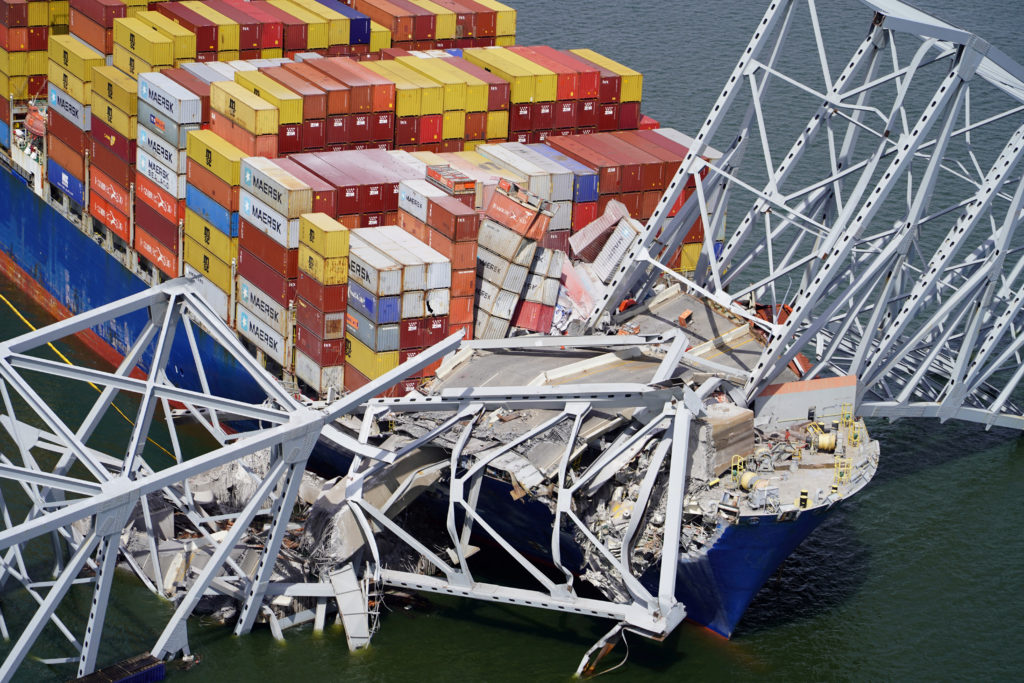
The tragic incident involving the collapse of the Francis Scott Key in Baltimore Bridge has sparked concerns regarding the safety measures in place and their effectiveness in preventing such a disaster and the loss of precious lives.
The cause of the incident involving a 985-foot long cargo vessel colliding with a pier, a crucial component of the bridge structure, remains uncertain.
However, could more measures have been taken to enhance the protection of the bridge and prevent a major vessel from colliding with a crucial part of its infrastructure?
According to a report from the World Association for Waterborne Transport Infrastructure, there have been 35 major bridge collapses worldwide from 1960 to 2015, resulting in the tragic loss of 342 lives.
There have been a total of eighteen collapses in the United States, with one notable incident occurring in 1980. During that year, a massive 609-foot freighter collided with the Sunshine Skyway Bridge in the Tampa Bay area of Florida.
The freighter, Summit Venture, was navigating through a narrow and winding shipping channel when a sudden and intense squall caused the ship’s radar to malfunction. During the morning rush hour, a ship collided with one of the bridge’s supports, causing a 1,400-foot section of concrete roadway to fall into the water.
Seven vehicles, including a bus carrying 26 passengers, plunged 150 feet into the water. Tragically, a significant number of individuals lost their lives.
After the unfortunate incident, a new bridge was built, and its piers were safeguarded by a series of circular sheet pile cells called dolphins. The protective infrastructure is commonly referred to as a fendering system. The larger piers were fortified with concrete and rocks to provide extra protection, and the shipping lanes were expanded to accommodate vessels passing through.
Just one day before the anticipated opening of the new bridge, a 74-foot-long shrimp boat collided head-on with the protective bumpers of the bridge. The bumper only suffered minor damage, but fortunately, the bridge remained unharmed and was reopened at a later time. The shrimp boat encountered a mishap and was subsequently moved to shallower waters, where it ultimately sank.
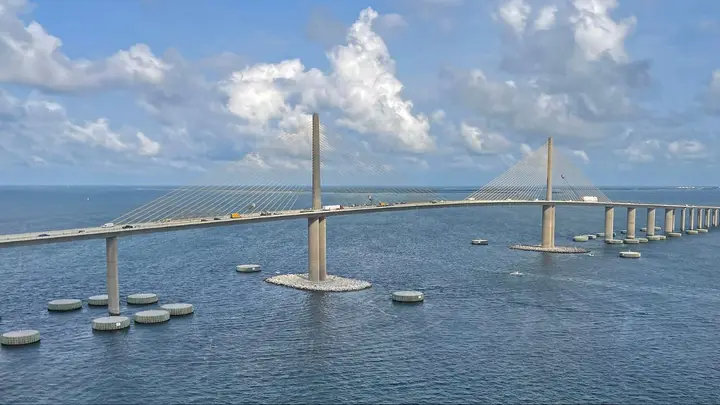
Breaking: Baltimore Bridge Collapse – Live Updates
Photos and videos from the scene reveal that the Francis Scott Key Bridge, constructed in 1977, lacks protective barriers. Additionally, the pier that was struck does not have any surrounding barrier or buffer-like structures. There are some small circular-shaped structures in the water, but their purpose remains uncertain. A spokesperson for the National Transportation Safety Board (NTSB) did not respond to Fox News Digital’s request for comment regarding the presence of a bumper system or protective barriers on the Baltimore bridge.
Ron Harichandran, Ph.D., dean of the Tagliatela College of Engineering in Connecticut, mentioned that the presence of protective barriers may not have been sufficient to halt the Dali due to its immense size and weight. The container from Singapore has a dead weight tonnage of almost 117,000 tons.
“The pier’s existing protection systems may not have been sufficient to prevent this incident due to the size and weight of the cargo ship,” Harichandran explained. “It was simply overwhelming.”
“It’s a rare occurrence to see an island built around piers,” Harichandran commented, suggesting that it could have been a potential solution. “The process entails creating a landmass in the river to serve as a buffer, redirecting the ship’s impact away from the pier.” That’s what you would need to do if you desired that level of protection, but of course, it comes with a hefty price tag.
“It would have been more ideal to address this issue during the construction of the bridge, rather than having to retrofit it,” he remarked.
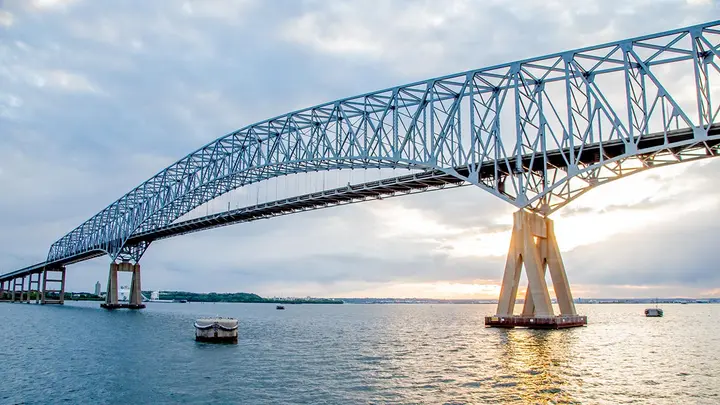
During a press briefing on Tuesday, Jennifer Homendy, the chair of the National Transportation Safety Board, highlighted the importance of investigating the collapse of the Maryland bridge, specifically focusing on the inclusion of protective structures.
“There are concerns regarding the bridge’s structure, particularly the protective measures in place to prevent any potential collapse,” she responded to a reporter’s inquiry. “We have a clear understanding of the necessary components of a structure.” We will be looking into the construction process of this bridge as part of our investigation. It will examine the structure itself. Are there any safety enhancements that should be considered? We will thoroughly investigate all aspects of the matter.
Tragically, it is believed that six construction workers who were on the bridge during its collapse have lost their lives, according to the latest report.
According to Harichandran, there are alternative systems available that are more budget-friendly for notifying bridge users.
“Having trip wires and implementing more advanced warning sensors could provide an earlier alert for approaching the bridge,” suggested Harichandran.
“With certain remote sensing approaches, there was a possibility of providing an earlier warning about a potential disaster, which could have helped in evacuating people in time.” According to Harichandran, an earlier warning could have alerted the authorities sooner, potentially preventing the need for traffic disruptions caused by the radio call. “Imagine a clever mechanism placed a mile before the bridge, ready to detect any ship deviating from its intended path. Once triggered, it would promptly alert people of the anomaly, enabling them to take necessary precautions, such as closing the bridge.”



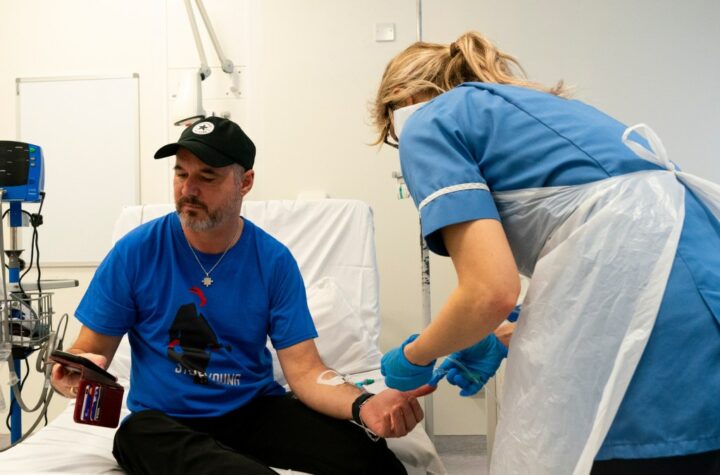
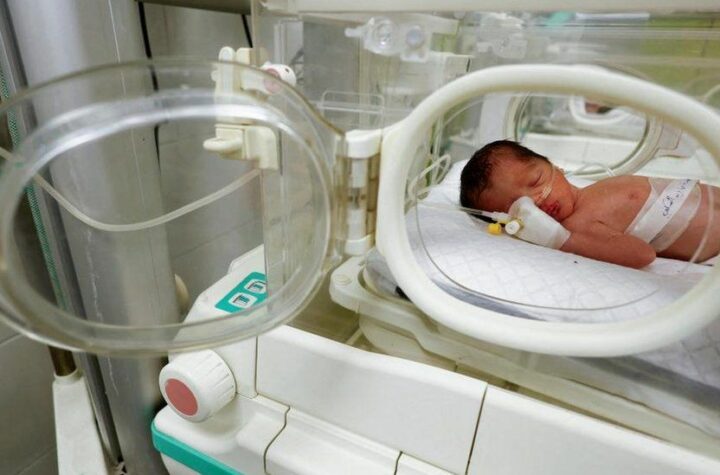
More Stories
Trial for Rape and Human Trafficking will take Place in Romania for Andrew Tate and his Brother Tristan
A British individual tests the first Customised Melanoma Vaccination
Gaza Baby Delivered from Dead Mother’s Womb Perishes